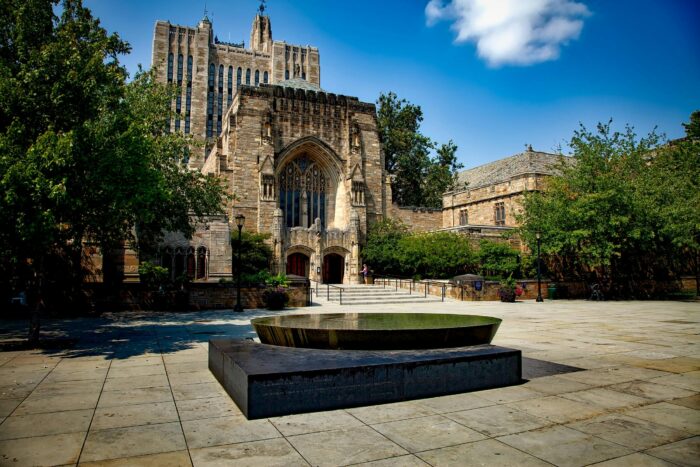I. The Ivy League—What It Is and What It Isn’t
Ask most people what the “Ivy League” is, and people will often tell you they’re the most elite colleges in the country. Here’s the reality: the Ivy League started as an athletic conference, not an academic distinction. Formed in 1954, the league originally grouped eight Northeastern colleges with similar academic standards and intercollegiate sports commitments. That list—Harvard, Yale, Princeton, Columbia, Brown, Dartmouth, Cornell, and the University of Pennsylvania—is now shorthand for academic prestige. But the name didn’t always carry such weight outside the football field.
So, what is the Ivy League today? It includes some of the most selective and well-resourced institutions in the world. But “Ivy League” isn’t a proxy for “best college”—and it never was. MIT, Stanford, Duke, and the University of Chicago are not Ivy League schools, yet routinely outrank or outperform Ivies in specific disciplines and career outcomes. The term “Ivy League” has become marketing gold and myth-making fuel, but don’t confuse it with a universal measure of excellence.
In this article, we’ll take a close look at the Ivy League, while also looking past their mythology. Understanding elite colleges past the Ivy league is a skill on its own. Here, we’ll find out what they offer, how they compare to the Ivy League, and whether these colleges are the right fit for your academic and personal goals. We don’t want you to just chase the label—you should chase the right match.
II. The Eight Ivy League Institutions
Harvard University
Harvard is the elder statesman of American higher education—founded in 1636, and still setting the pace. Known for its powerhouse faculty, globe-spanning alumni network, and formidable endowment, Harvard attracts students who are ambitious, polished, and often pre-professionally minded. Whether your future lies in Wall Street boardrooms, the Supreme Court, or Silicon Valley, odds are a Crimson alum is already there. Its culture is competitive, but its resources are unmatched.
| Location | Admit Rate | Avg SAT | Avg ACT | Undergrad Enrollment | Annual Cost |
| Cambridge, MA | ~3.6% | 1500–1580 | 34–36 | ~7,000 | ~$80,600 |
Yale University
Yale blends the intensity of academic rigor with a deep artistic soul. Its students are known for intellectual curiosity, whether they’re composing symphonies or debating Locke and Hobbes in their residential colleges. Yale’s residential system fosters close-knit communities within a sprawling Gothic campus. Expect to find future scholars, public servants, and creatives in equal measure.
| Location | Admit Rate | Avg SAT | Avg ACT | Undergrad Enrollment | Annual Cost |
| New Haven, CT | ~3.7% | 1500–1560 | 33-35 | ~6,800 | ~$87,000 |
Princeton University
Princeton is perhaps the most “purely academic” of the Ivies—undergrad-focused, beautifully bucolic, and serious about intellectual life. With a faculty-to-student ratio that would make most schools blush, Princeton prizes scholarly depth. Students here tend to be cerebral, driven, and often headed for graduate school. If the phrase “senior thesis” doesn’t scare you, Princeton might just be your place.
| Location | Admit Rate | Avg SAT | Avg ACT | Undergrad Enrollment | Annual Cost |
| Princeton, NJ | ~4.6% | 1510-1570 | 34-35 | ~5,700 | ~$87,000 |
Columbia University
Columbia brings the Ivy League into the heart of New York City—and never lets you forget it. Fast-paced, intellectually charged, and diverse, Columbia draws ambitious self-starters with a global outlook. The Core Curriculum ensures a shared intellectual foundation, while the city itself becomes a second classroom. It’s intense, it’s demanding, and it’s a launchpad for world changers.
| Location | Admit Rate | Avg SAT | Avg ACT | Undergrad Enrollment | Annual Cost |
| New York City, NY | ~3.9% | 1510-1530 | 34-35 | ~9,700 | ~$93,400 |
University of Pennsylvania (UPenn)
UPenn is where pre-professional ambition meets serious academic muscle. From Wharton’s world-class business training to top-tier programs in nursing, engineering, and liberal arts, Penn’s interdisciplinary ethos encourages hustle. Students are social, entrepreneurial, and never too far from the next big idea. If you’re the kind of person who builds a startup before breakfast, you’ll find your tribe here.
| Location | Admit Rate | Avg SAT | Avg ACT | Undergrad Enrollment | Annual Cost |
| Philadelphia, PA | ~5.4% | 1500-1570 | 34-35 | ~10,500 | ~$66,100 |
Dartmouth College
Dartmouth combines Ivy prestige with the intimacy of a liberal arts college and a dose of wilderness adventure. Tucked in New Hampshire, it attracts outdoorsy intellectuals who thrive in a tight-knit community. There’s a deep-rooted loyalty among alums and a spirit of collaboration that sets it apart. If you want academic rigor with a side of snowshoes, look here.
| Location | Admit Rate | Avg SAT | Avg ACT | Undergrad Enrollment | Annual Cost |
| Hanover, NH | ~5.3% | 1500-1580 | 34-35 | ~4,500 | ~$91,300 |
Brown University
Brown is the rebel of the Ivy League—intellectual but unorthodox, rigorous but nonconformist. Known for its Open Curriculum, Brown empowers students to chart their own academic paths, free of core requirements. It draws creative thinkers, social justice warriors, and those who color outside the lines. If you’re fueled by passion, not structure, Brown was built for you.
| Location | Admit Rate | Avg SAT | Avg ACT | Undergrad Enrollment | Annual Cost |
| Providence, RI | ~5.2% | 1510-1560 | 34-36 | ~7,700 | ~$89,000 |
Cornell University
Cornell is the Ivy that straddles elite tradition and public mission. With the largest undergrad population in the League and a sprawling campus in Ithaca, it’s known for academic breadth—from hotel administration to engineering to agriculture. Cornellians are pragmatic, industrious, and often grounded. If you want an Ivy experience with a big-university feel, this is your spot.
| Location | Admit Rate | Avg SAT | Avg ACT | Undergrad Enrollment | Annual Cost |
| Ithaca, NY | ~7.5% | 1470-1550 | 33-35 | 16,000 | ~$92,100 |
While the Ivy League looms large in the college admissions landscape, it’s only part of the picture. Prestige, rigor, and elite opportunity aren’t confined to eight Northeastern campuses. In fact, some of the most competitive, innovative, and globally respected institutions—think MIT, Stanford, Duke, and UChicago—operate entirely outside the Ivy umbrella. These “Ivy Plus” schools rival, and in some cases eclipse, their Ivy peers in specific fields, culture, and outcomes. So before you fixate on the Ivies, broaden your lens. The next tier of elite education isn’t a step down—it’s a different game entirely.
III. The Ivy League Lookalikes: Elite but Not “Ivies”
Let’s clear the air—no, Stanford is not in the Ivy League. Neither is MIT. That hasn’t stopped half the internet from mistakenly lumping them in. These institutions, along with others like the University of Chicago, Duke, and Vanderbilt, are often referred to as “Ivy Plus” schools—a term that acknowledges their comparable academic rigor, low acceptance rates, and elite outcomes without mislabeling them as Ivy League. The confusion is understandable, but for serious applicants, precision matters. Let’s take a look at what we’re working with:
Stanford University
Stanford has everything the Ivies have—plus palm trees and a direct line to Silicon Valley. It’s a playground for innovators, coders, startup founders, and anyone fluent in ambition. With one of the largest endowments and most selective admissions rates in the world, Stanford is academically unforgiving but socially laid-back. Students here are as likely to launch a VC-backed startup from their dorm room as they are to write a thesis on climate economics.
| Location | Admit Rate | Avg SAT | Avg ACT | Undergrad Enrollment | Annual Cost |
| Stanford, CA | ~4% | 1500-1560 | 34-35 | ~8,000 | ~$92,900 |
Massachusetts Institute of Technology (MIT)
MIT is where brilliance meets burnout—on purpose. The vibe is deeply intellectual, intensely collaborative, and ruthlessly focused on solving the world’s hardest problems. Whether it’s quantum computing, biotechnology, or urban planning, MIT doesn’t do surface-level. Its students are curious, inventive, and deeply hands-on—the kind of people who prototype before they pontificate.
| Location | Admit Rate | Avg SAT | Avg ACT | Undergrad Enrollment | Annual Cost |
| Cambridge, MA | ~4.5% | 1520-1580 | 35-36 | ~4,500 | ~$86,000 |
Duke University
Duke is the rare blend of Southern hospitality and academic punch. It pairs elite research with top-tier athletics, drawing students who want to dominate both the classroom and the court. Its pre-professional culture is strong—especially in business, medicine, and public policy—and its students are competitive, polished, and socially active. Durham may be small, but Duke thinks big.
| Location | Admit Rate | Avg SAT | Avg ACT | Undergrad Enrollment | Annual Cost |
| Durham, NC | ~7% | 1520-1570 | 34-35 | ~6,500 | ~$89,000 |
University of Chicago
UChicago is where fun goes to die—or so the joke goes. In truth, it’s a paradise for deep thinkers and debate-lovers who thrive on rigorous academics and late-night philosophical arguments. Its famed Core Curriculum builds intellectual stamina, and its students tend to be independent, intense, and slightly iconoclastic. If you crave intellectual extremity, UChicago is your Everest.
| Location | Admit Rate | Avg SAT | Avg ACT | Undergrad Enrollment | Annual Cost |
| Chicago, IL | ~4.9% | 1510-1560 | 34-35 | ~7,500 | ~$91,000 |
Georgetown University
If your ambitions point toward Capitol Hill or international diplomacy, Georgetown is the move. Its Jesuit foundation fosters ethics-driven leadership, and its D.C. location guarantees access to internships, think tanks, and political power. Students tend to be globally minded, politically active, and sharply dressed. Expect to spend as much time in policy debates as you do in lecture halls.
| Location | Admit Rate | Avg SAT | Avg ACT | Undergrad Enrollment | Annual Cost |
| Washington, DC | ~13% | 1390-1550 | 32-34 | ~6,900 | ~$80,000 |
New York University (NYU)
NYU is not a campus—it’s a city with lecture halls. The draw here is location, location, location—plus access to industries like finance, fashion, media, and tech. Students are fiercely independent, globally diverse, and often more focused on internships than frat parties. It’s not traditional, and that’s exactly the point.
| Location | Admit Rate | Avg SAT | Avg ACT | Undergrad Enrollment | Annual Cost |
| New York, NY | ~9% | 1480–1570 | 33–35 | ~30,000 | ~$93,000 |
Rice University
Rice may be small in size, but its reputation looms large in STEM circles. With a 6:1 student-faculty ratio and a deeply collaborative vibe, it feels more like an elite liberal arts college embedded in a Tier-1 research institution. Students are bright, grounded, and often drawn to science, engineering, and medicine. It’s an academic oasis in the heart of Houston.
| Location | Admit Rate | Avg SAT | Avg ACT | Undergrad Enrollment | Annual Cost |
| Houston, TX | ~8% | 1500–1570 | 34–36 | ~4,500 | ~$74,000 |
Vanderbilt University
Vandy is where SEC sports meet scholarly swagger. With strengths in education, medicine, and economics, it draws ambitious students who want rigor without rigidity. The social scene is vibrant, the campus is stunning, and the balance between academic drive and Southern charm is part of the appeal. Think of it as the Ivy League’s friendliest cousin.
| Location | Admit Rate | Avg SAT | Avg ACT | Undergrad Enrollment | Annual Cost |
| Nashville, TN | ~6% | 1510–1560 | 34–35 | ~7,000 | ~$88,000 |
Emory University
Atlanta-based Emory punches well above its weight in health sciences and global studies. It’s a hub for future doctors, public health experts, and nonprofit leaders. The student body skews thoughtful and service-minded, with a global tilt and a collaborative spirit. If you’re pre-med but also care about the bigger picture, Emory delivers.
| Location | Admit Rate | Avg SAT | Avg ACT | Undergrad Enrollment | Annual Cost |
| Atlanta, GA | ~11% | 1460–1550 | 32–34 | ~7,300 | ~$88,500 |
IV. Rankings, Reputation, and Reality
Yes, Ivy League schools often rank near the top of global and national lists—but they don’t own the podium. Depending on the source—U.S. News, QS, Times Higher Ed—you’ll find Stanford, MIT, and the University of Chicago frequently outpacing Ivy peers. Globally, Oxford and Cambridge stand as academic titans, with centuries of intellectual dominance and alumni rosters that include Nobel laureates, world leaders, and tech pioneers. Prestige is no longer the exclusive domain of the Ivy League—it’s a shared currency among elite institutions, both domestic and international.
Still, there’s no denying the gravitational pull of the Ivy brand. Admissions officers know it, employers know it, and you probably know it too. A degree from an Ivy League school can open doors, accelerate networking, and offer an immediate layer of credibility. But it’s not a golden ticket. Plenty of high achievers get rejected from Ivies and still end up leading Fortune 500 companies or making Forbes’ 30 Under 30 from state schools and liberal arts colleges.
Today’s college rankings reflect a complex equation—faculty quality, research output, selectivity, alumni success, financial resources. But they don’t capture fit, culture, or your specific goals. Choosing a school because it sits at #3 on a list won’t help you thrive if its campus culture drains you. Likewise, turning down a “lower-ranked” university with the exact program, mentorship, and environment you need could cost you more than prestige ever buys back.
So, should rankings guide your search? Absolutely—as one data point among many. Respect the metrics, but don’t surrender to them. The real prestige comes not from where you start, but what you do with the opportunities once you’re there.
V. Why the Ivy League Matters to You
There’s a reason the Ivy League still dominates dinner table conversations and LinkedIn headlines: it signals prestige, power, and access. These schools boast alumni networks that stretch from Wall Street to the White House, faculty who publish the books your textbooks quote, and post-grad pipelines that funnel students directly into top-tier jobs and graduate programs. For certain industries—consulting, finance, politics—the Ivy name can absolutely accelerate your trajectory. It opens doors faster. It gets your resume more looks. It makes introductions easier.
But prestige without purpose is just expensive brand worship. We’ve seen students chase the Ivy label at the cost of personal fit, academic interest, and future fulfillment. Choosing a college because it’s famous—and not because it aligns with your goals—is like buying designer shoes that don’t fit. They might impress at first, but you’ll be limping through the journey.
That’s where MBA Exchange comes in. We don’t just help clients “get in”—we help them get clear. Clear on what success looks like. Clear on which environments bring out their best. Clear on how to turn raw ambition into strategic, well-positioned applications. Whether you’re building a college list, prepping for interviews, or planning five years ahead for an MBA, we help you zoom out, map the terrain, and make decisions that serve both short-term wins and long-term growth.
The Ivy League matters—but only if it matters for you. Our job is to help you figure that out with confidence. Book a free consultation to find out what that looks like for you.





